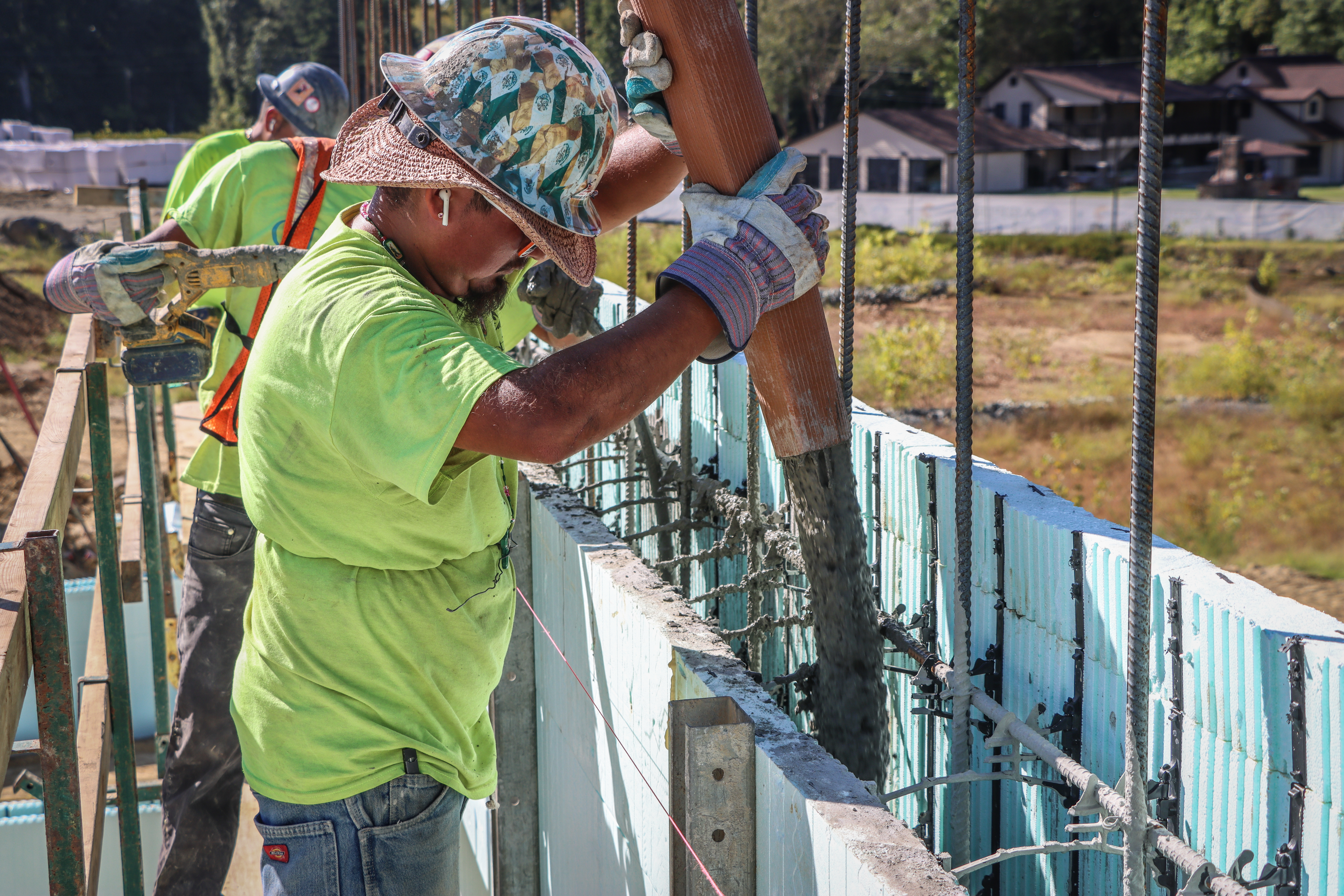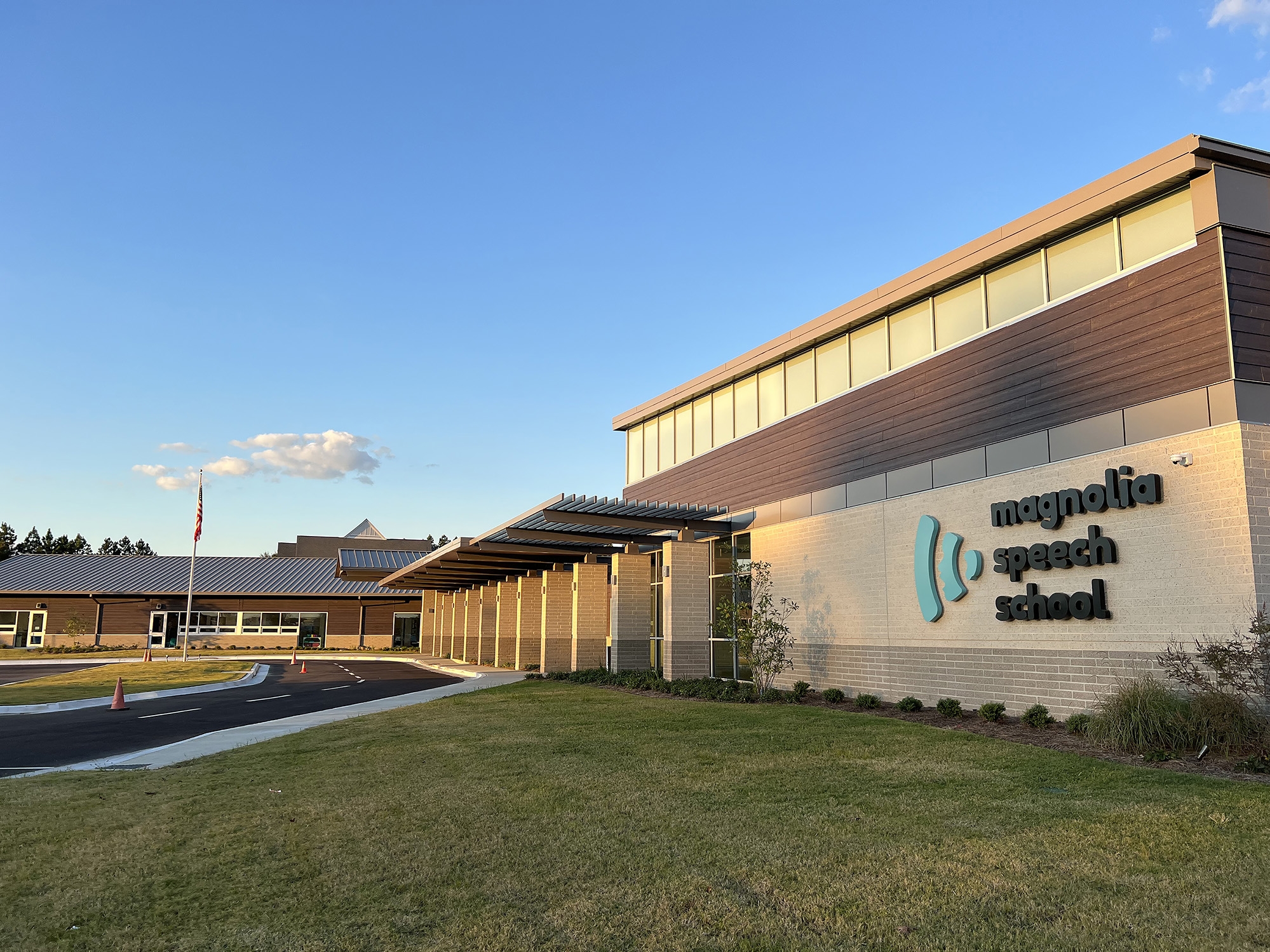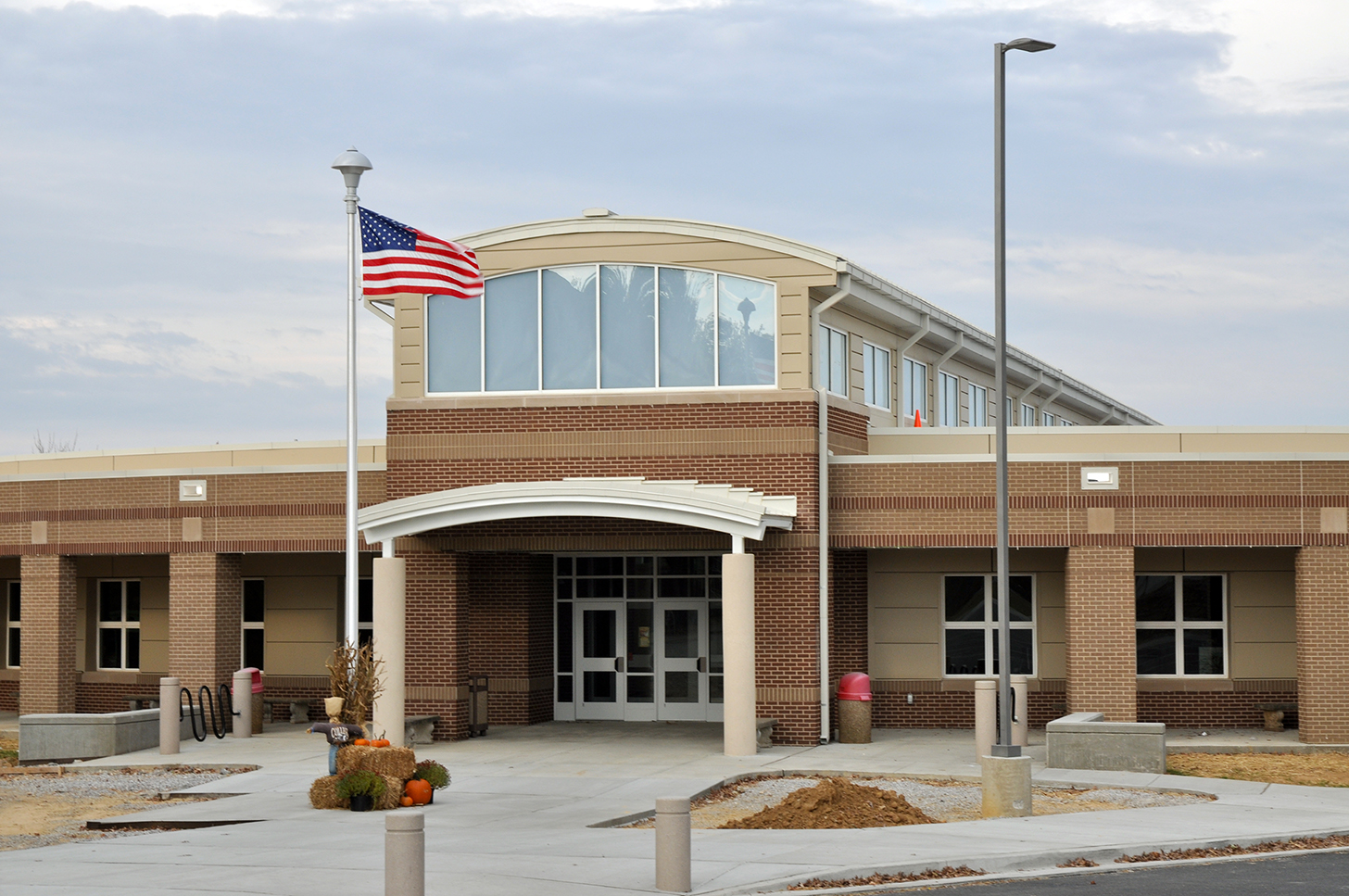
- Products
- Why Nudura
- Nudura Project Applications
- Training Academy
- Resources
- Company
Building Safer, More Sustainable Schools with ICFs
As more schools seek sustainable design practices and strategies to decrease their maintenance and operational costs, Insulated Concrete Forms (ICFs) have emerged as the dominant construction method for new educational facilities.  In this blog post, we’ll break down the applications of this building technology and how ICFs benefit school officials of all levels, the students and the community at large.
In this blog post, we’ll break down the applications of this building technology and how ICFs benefit school officials of all levels, the students and the community at large.
What are ICFs?
Insulated Concrete Forms are hollow blocks of foam insulation that are stacked, filled with concrete and reinforced with steel rebar. When the concrete cures, you’re left with a durable structural wall system that has continuous insulation on the interior and exterior of the building. ICF construction is used across residential and commercial applications for any project that needs greater strength or energy-efficiency.
The Benefits of ICFs in Schools
At the onset of a new school project, key stakeholders will meet and discuss their key priorities for the building’s design and desired outcomes. Inevitably, student safety is top of the list. Then, more than likely, energy-efficiency, cost, turnaround time and aesthetics.
Compared to conventional construction materials like CMU or steel-framing, Insulated Concrete Forms supports all of these goals, giving peace of mind to the superintendents, school board, energy managers, facility directors, parents and city officials.
The Safest Schools
First and foremost, ICF schools are incredibly safe. Far stronger than other building methods, Insulated Concrete Form walls have been tested to withstand the worst weather conditions, including high winds and impact from debris, protecting students and staff year-round. Even in tornado alley and hurricane-prone areas, ICF buildings are disaster resilient and can meet ICC 500 storm shelter requirements and FEMA safe room standards for near-total protection.
With this durability in the face of natural disasters, ICFs are a low-maintenance building material. The foam and concrete are inorganic, so they won’t attract termites or carry mold. And when used with other compatible cladding, roofing and glazing systems, facility managers can prioritize maintenance of other areas of the building, knowing that the exterior will be leak-free.
Energy-Efficient Schools
Energy efficiency is another significant factor to consider, especially with the large square footage of most educational buildings. As schools face high utility bills, typically the second-largest expenditure after salaries, strategies to reduce energy consumption can go a long way to keeping a project within budget. The thermal mass of concrete and dual insulation of ICF walls minimizes thermal transfer, stabilizes interior temperatures and ultimately reduces the HVAC load of the building. In optimizing the heating and cooling needed to maintain the building, ICF schools notice substantial financial savings.
For example, Warren County Public Schools in Bowling Green, Kentucky, reports saving more than $14 million dollars since beginning their Conservation Program in 2003, which includes building with Insulated Concrete Forms. These savings have been reallocated for educational resources and teacher salaries.
This insulating power is why many structures are using ICF construction to achieve net-zero energy status, in which a building produces as much energy as it consumes. Richardsville Elementary School, part of Warren County Public Schools, opened in 2010 as the first net-zero school in the United States, and was constructed with Nudura ICFs.
Learn more about how this school district became the most energy-efficient in Kentucky.
Wrap Up
Buildings using Insulated Concrete Forms have proven performance for protecting occupants during inclement weather and improving the energy performance year-round. By reducing the need for extensive mechanical systems and cutting utility bills, ICFs provide immediate and long-term financial benefits. For the education sector, these safety and sustainability benefits ultimately bring peace of mind to the parents, faculty, staff and students. ICFs represent a smart investment in the future of education. Whether for new constructions or renovations, schools that opt for ICFs are building not just for today, but for generations to come.
CONTACT US
We’re committed to supporting homeowners and design professionals who are interested in or use our products. We’re always happy to help and provide more information.





